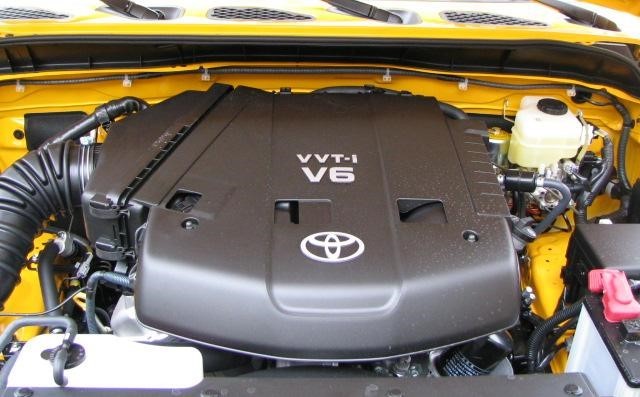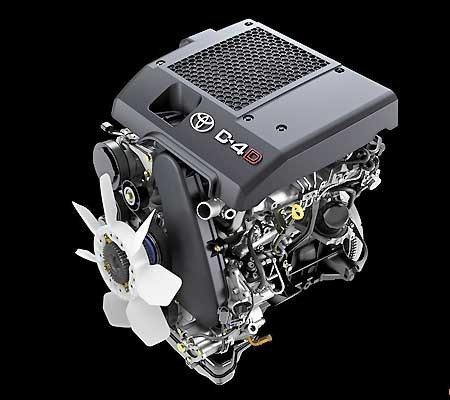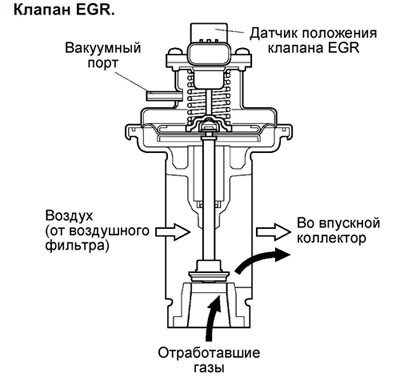
Toyota Land Cruiser Prado Engines
Content
In 1987, the Toyota design team began to create a lighter version of the Land Cruiser heavy SUV - the 70 model. The three-door body version of the car was a huge success around the world. Its successful continuation was a lightweight, comfortable car with five doors, which began to be mass-produced in 1990. The new all-wheel drive off-road vehicle of a frame design, with a reduction gear, rear and front solid axles, received the serial designation Prado.

History of creation and production
The first, somewhat angular in appearance, with high rectangular windows, and a low, squat engine compartment, the car looks very unusual from the height of past years. The secret is simple: the designers designed it not at all like an SUV. He entered the world market in the form factor of an all-weather family car - an all-terrain vehicle on wheels. The assembly site for Prado SUVs is Toyota's engineering mecca, the assembly line at the Tahara Plant in Aichi Prefecture.
- First generation (1990-1996).
Inside the car, on three rows of seats, in addition to the driver, seven more passengers could comfortably accommodate. The level of comfort was unprecedented for cars of those years. In addition, the engineers provided the Prado with excellent cross-country ability. It is quite logical that both gasoline and diesel engines should have been installed on such a massive car. The design turned out to be so successful that for five years the SUV was sold in different countries of the world without a single structural change.
- Second generation (1996-2002).
As in the first series, three- and five-door cars rolled off the assembly line. But their Prado 90 design no longer even remotely resembled the contours of the founder of the model. Aggressive marketing of Mitsubishi Pajero forced Toyota designers to work fruitfully. The frame shape based on the 4Runner platform has undergone major changes. Instead of a continuous axle, an independent suspension was installed in front. Blocking units for two differentials were added to the all-wheel drive mechanism with a reduction gear - center and rear axle. The range of engines was replenished with a 140 hp turbocharged diesel unit.

- Third generation (2002-2009).
The body design of the third generation Prado 120 was done by French specialists from the ED2 studio. Five-door modifications reached the Russian market at the beginning of the new century. But buyers in other countries, as before, were also offered a three-door version. The main components of the car underwent structural modernization:
- frame;
- front suspension;
- body.
Among the new products, one can note the appearance of a pneumatic rear suspension, adaptive shock absorbers, an up and down assist system, power steering, ABS, and an electric rear-view mirror. The drive concept and transmission of the car have not changed. Users were offered a choice of automatic (4x) and mechanical (5x) transmissions.
- Fourth generation (2009 - 2018).
The new platform has been rolling off the Tahara Plant line for ten years. And it is too early to talk about the cessation of the production of an SUV, which every year is becoming more and more modern. The new car has more design than engineering innovations. If the appearance is gradually getting rid of sharp angular transitions in favor of soft rounded shapes, then the interior design, on the contrary, has become distinguished by the correct geometry.

Restyling in 2013 added a large number of intellectual innovations to the car package:
- 4,2-inch LCD monitor on the dashboard;
- separate headlight control;
- adaptive suspension (for top versions);
- rear view camera;
- engine start system without ignition key;
- suspension kinetic stabilization system;
- trailer sway control program.
This list can be continued endlessly. For various categories of buyers, the creators of Prado have prepared four basic versions of trim levels - Entry, Legend, Prestige and Executive.
Depending on what kind of suspension is on the car, the driver of a modern Prado SUV has a large selection of driving modes in the arsenal:
- three standard - ECO, NORMAL, SPORT;
- two adaptive - SPORT S and SPORT S +.
Each mode has an individual set of settings for the functioning of the steering, gearbox and shock absorbers. The creators of the car almost reached their goal.
The creators of the Prado have achieved their goal: the new SUV is as close as possible in terms of its characteristics to the flagship Land Cruiser 200.
Engines for Toyota Land Cruiser Prado
The all-wheel drive giant may well compete in terms of production time with the long-livers of the car market, developed by the team of the Toyota auto concern - Corolla, Chaser, Celica, Camry, RAV4. Moreover, only two units were installed on the first two generations of Prado - 1KZ-TE and 5VZ-FE. Only in the new century the line of motors was slightly updated. Such complex and heavy mechanisms require a serious design approach, and are produced for a long time. For 28 years, only six Toyota branded large-capacity engines have become part of the Prado power plant.
| Marking | Type | Volume, cm 3 | Maximum power, kW / h.p. | Supply system |
|---|---|---|---|---|
| 1KZ-TE | turbocharged diesel | 2982 | 92/125 | multipoint injection, OHC |
| 5VZ-FE | petrol | 3378 | 129/175 | distributed injection |
| 1GR-FE | –:– | 3956 | 183/249 | –:– |
| 2TR-FE | –:– | 2693 | 120/163 | –:– |
| 1KD-FTV | turbocharged diesel | 2982 | 127/173 | DOHC, Common Rail+intercooler |
| 1GD-FTV | –:– | 2754 | 130/177 | Common Rail |
Despite the very specific technical characteristics, Prado motors were perfect for installation on other large-sized models of Toyota cars (16 in total):
| Model | 1KZ-TE | 5VZ-FE | 1GR-FE | 2TR-FE | 1KD-FTV | 1GD-FTV |
|---|---|---|---|---|---|---|
| car | ||||||
| Toyota | ||||||
| 4runner | * | * | ||||
| Great Hiace | * | * | ||||
| Granviva | * | * | ||||
| Fj cruiser | * | |||||
| Fortuner | * | * | * | |||
| Hiace | * | * | * | * | ||
| Hilux PickUp | * | * | * | |||
| Here comes the King | * | |||||
| Hilux Surf | * | * | * | * | * | |
| land Cruiser | * | |||||
| Land Cruiser Prado | * | * | * | * | * | * |
| Regius | * | |||||
| Royal Ace | * | * | * | |||
| Tacoma | * | * | ||||
| Hiace Touring | * | |||||
| Tundra | * | * | ||||
| Total: | 8 | 6 | 7 | 7 | 6 | 5 |
As always, Japanese accuracy and a penchant for calculating long-term economic benefits played a role. When using the principle of nodal unification, managers and designers simply did not need to spend time and money on designing new units if they had ready-made copies of excellent quality.
The most popular engine for Land Cruiser Prado cars
Since there are not so many models on which the same engines were installed as on the Prado SUV, it is logical to consider the most popular unit among all models. Without a doubt, the most powerful unit, the four-liter gasoline 1GR-FE, became the champion of the first decade of the 5st century in terms of frequency of use. Its premiere under the hood of Prado, instead of the outdated 2002VZ-FE by that time, is dated XNUMX.
Due to the fantastic popularity of SUVs and rear-wheel drive pickups on both sides of the Pacific, except for Japan, its production was established in the United States of America.

The motor is produced in two versions:
- with VVTi phase regulator;
- Dual-VVTi.
Volume - 3956 cm³. It differs from other units used in Prado by a V-shaped arrangement of cylinders (camber angle 60 °). Peak engine torque at 3200 rpm - 377 N * m. The negative aspects of the technical characteristics include a large amount of harmful emissions (up to 352 g / km) and high noise. The work of the nozzles is heard like the soft clatter of horse hooves.
The aluminum cylinder block, characteristic of the Toyota engine line of the new century, is complemented by cast iron liners. After replacing in 2009 too heavy elements of the piston group and crankshaft with lighter specimens, with the Dual-VVTi phase regulator, the motor was able to develop 285 hp.
In addition, during restyling, the intake mode was changed, due to which the compression ratio increased to 10,4: 1.
In 1GR-FE constructors, except for lightweight pistons. A new squish combustion chamber was installed. The advantage of this know-how is obvious. In addition to the already noted significant increase in power, the efficiency of gasoline consumption has increased (passport version - AI-92). Gasoline condensation was prevented thanks to the use of a new form of intake ports slightly reduced in comparison with the 5VZ-FE.

Pre-styling copies of the motor avoided a mass problem in the form of oil leakage. But another whim awaited the drivers: the slightest overheating could lead to a breakdown of the cylinder head gasket. This required additional attention to the mode of operation of the power supply system. Due to the lack of hydraulic lifters. Every hundred thousand miles. Mileage required valve clearance adjustment using special washers. With proper care and prevention of minor malfunctions (triple, cracking couplings, "swimming" at idle, etc.), the standard engine resource was 300 thousand km.
Ideal engine choice for Prado
Engines for Toyota Land Cruiser Prado SUVs are very specific. For the most part, these are the most complex technological units into which designers have managed to integrate dozens of modern technologies in the field of chemistry, mechanics, kinematics, optics, electronics and artificial intelligence. One such example is the 1KD-FTV turbocharged diesel engine. This is the first-born of the new KD motor series, which rolled off the assembly line in 2000. Since then, it has been repeatedly upgraded to reduce power losses and increase efficiency.

Comparative tests conducted between this engine and its predecessor, the 1KZ-TE, showed that the new example is 17% more powerful. This result was achieved due to the combined power supply system and control of the fuel mixture formation process. The motor came close in terms of power characteristics to the best examples of gasoline engines. And in terms of torque, it completely pulled ahead.
Engineers managed to achieve a unique compression ratio of 17,9:1. The engine is very capricious, as it made very high demands on the quality of diesel fuel poured into tanks. If there is an excessive amount of sulfur in it, intensive operation destroyed the nozzles in 5-7 years. We had to be very careful with the new fuel system. The common rail battery mechanism and the EGR valve required special attention.

If low-quality fuel was poured into the tank, unburned residues were intensively deposited in various places in the system:
- on the intake manifold and dampers of the system for changing its geometry;
- on the EGR valve.
The color of the exhaust instantly changed and the level of traction decreased. The method of "treatment" of the problem is preventive cleaning of the elements of the fuel system and turbocharging every 50-70 thousand km. run.
In addition, driving on poorly paved roads causes vibration. All these facts reduce the life of the motor on Russian roads to 100 thousand km. However, problems can be avoided with the help of careful prevention. For example, regular maintenance of valves and adjustment of the thermal gaps significantly increases the mileage before overhaul.
Of the other disadvantages, one can note the common problem of all Toyota units - excessive oil consumption and coking.
Despite the capriciousness and subtleties of the tuning and maintenance process, the 1KD-FTV engine showed its best under the hood of the Toyota Land Cruiser Prado. With due attention to it, the correct operation tactics and regular preventive examinations and repairs, the motor "paid" the owners of SUVs with the same coin - power, speed and reliability.

